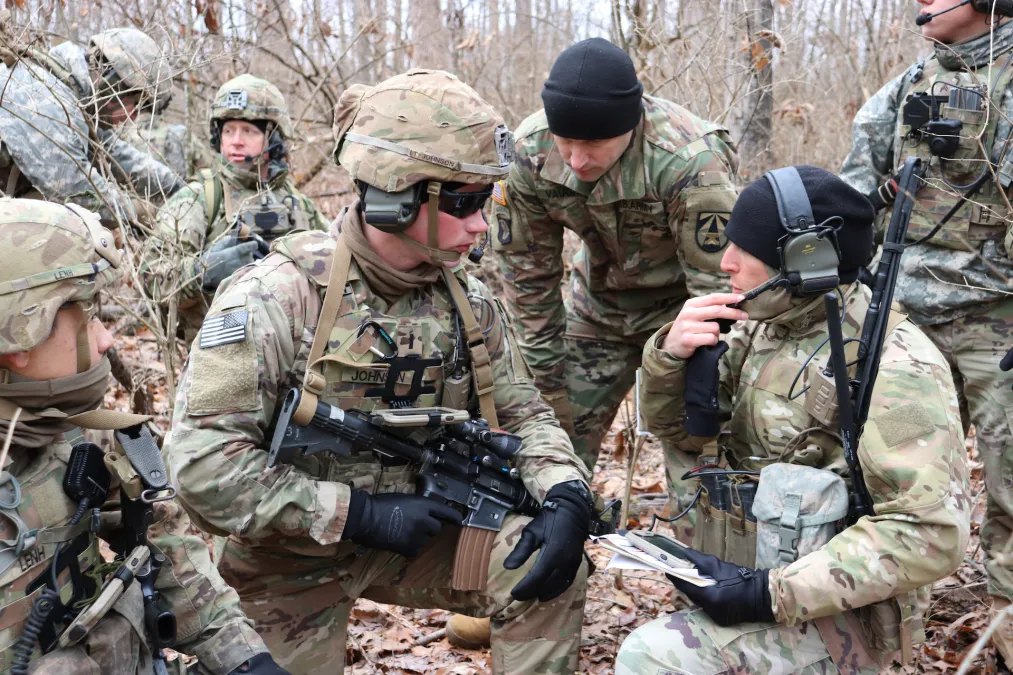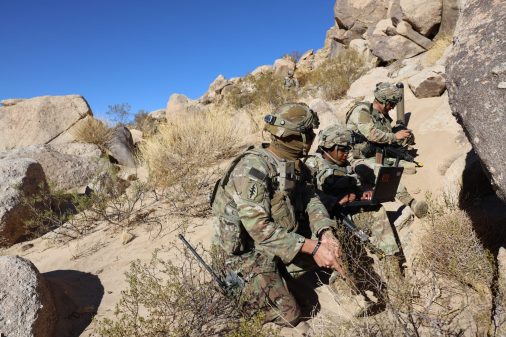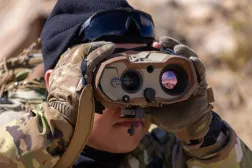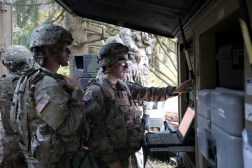Following network capability portfolio review, Army will have a different requirements framework

NASHVILLE, Tenn. — The Army expects to have better “harmonized” requirements when it comes to its network — to include the tactical and enterprise portions — following a capability portfolio review directed by the undersecretary.
Gabe Camarillo instituted the capability portfolio review, along with the vice chief of staff, to examine requirements and budgeting to get a better handle on the entire portfolio as the Army continues to modernize its systems.
“They’ve been focused on really aligning Army network investments into a coherent strategy that gives us the capabilities that we need to fight and win against near-peer adversaries,” he said at the Army’s Technical Exchange Meeting in Nashville Dec. 7. “We worked really hard over the course of the last several months to lay the groundwork to accelerate investments in certain areas, to drive requirements and to incorporate industry best practices so that our network can be secure, capable and most importantly, adaptable.”
The Army is trying to avoid as much as possible referring to the piecemeal portions of the network such as the tactical and enterprise space, instead envisioning a singular network that spans globally. In October 2021 the Army released its unified network strategy, which posits one network capability that breaks down stovepipes and allows soldiers to connect from anywhere in the world and pass data more seamlessly between forward-deployed forces and DOD offices.
“The siloed nature in which the Army’s network is put together is one of the reasons that we have to transition to a unified network … We had a very bifurcated enterprise and tactical network strategy. Our enterprise network has historically been divided into multiple organizational networks, making the totality of all of it hard to see and importantly, for me, hard to defend as well,” Camarillo said. “Until recently, we did not have an overarching plan to pull all this together. And that’s because different organizations have fielded different capabilities, lacking in many ways that coherence that I talked about, to enable us to deploy and be at home station in an almost seamless way.”
This setup made it difficult for forces to deploy from one area and immediately connect when on the ground, a hard lesson learned when the 82nd Airborne Division deployed to Afghanistan to deal with the U.S. troop withdrawal.
Following the portfolio reviews, the Army is looking to refine its requirements — which come from several organizations across the Army and Department of Defense — and simplify them from close to 30 from the Joint Capabilities Integration and Development System.
“What you will see is a different requirements framework come out of this,” Lt. Gen. John Morrison, deputy chief of staff, G6, said at the conference. “As we harmonized all these requirements, I will tell you that what we found was we had requirements all over the place for the network. The other thing that you will start seeing is requirements … being turned off as we harmonized around the central requirements and where it is that we really, really want to go.”
The reviews have helped give the Army a sustainable strategy and enabled officials to better view the service from a perspective of a unified network, he added.
“It was all about conducting a review of our requirements and then making sure that we had them harmonized and we had a set path forward to bring unified requirements that really crushed the barriers between strategic, operational and tactical forward. And then we did the work, the hard work of aligning funding to make sure that we were getting after the decisions that were made from a requirements perspective,” he said. “From my perspective, it was the first and only time that we’ve ever taken a look at requirements writ large, no matter where they resided.”
Specifically, Morrison said the reviews have helped the Army align requirements on things such as information transport and compute and store, which will directly impact where the service wants go in developing a hybrid cloud environment.
The most important item is the unified netops information systems initial capability document, Morrison said, because that will be the glue that binds everything they’re putting into the enterprise.
“The glue — how do we define that? It’s really going to be that data infrastructure so we can make sure that we are moving towards data centricity and we are making sure that it’s the data that is key on echelon, not the individual capabilities,” he said.
He noted the work the Army did to identify requirements for the service’s identity, credentialling and access management (ICAM) efforts. This framework will be critical in moving the Army to being data centric as opposed to network centric, which is Army Secretary Christine Wormuth’s No. 2 priority.
“That ability, whether you’re at the edge or you’re at the strategic and operational levels, that as you access the network, and more importantly, as you access applications and then even more importantly, as you access the data, we know exactly who you are and what it is that you’re allowed to see,” Morrison said. “Moving towards that data centric environment is going to be absolutely critical, and unifying that through our requirements approach is even more vital because that will drive everything else that our acquisition teammates go on to develop. Again, we’re not looking at that as enterprise and tactical. You must look at it end to end or else we’ll be off on the wrong path from jump street.”






